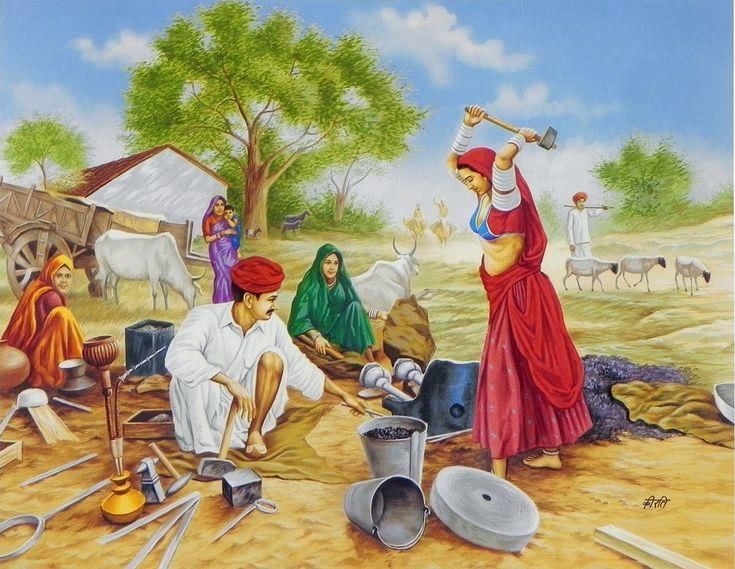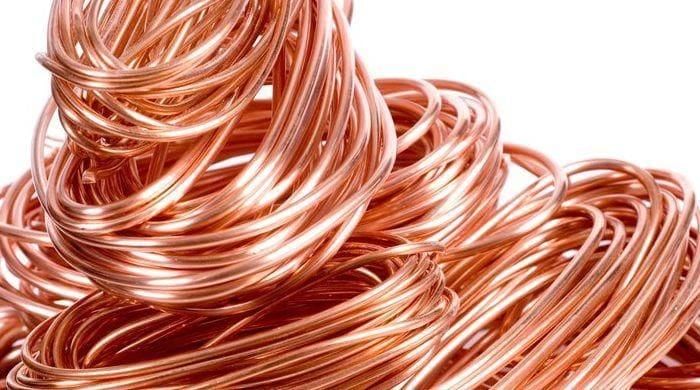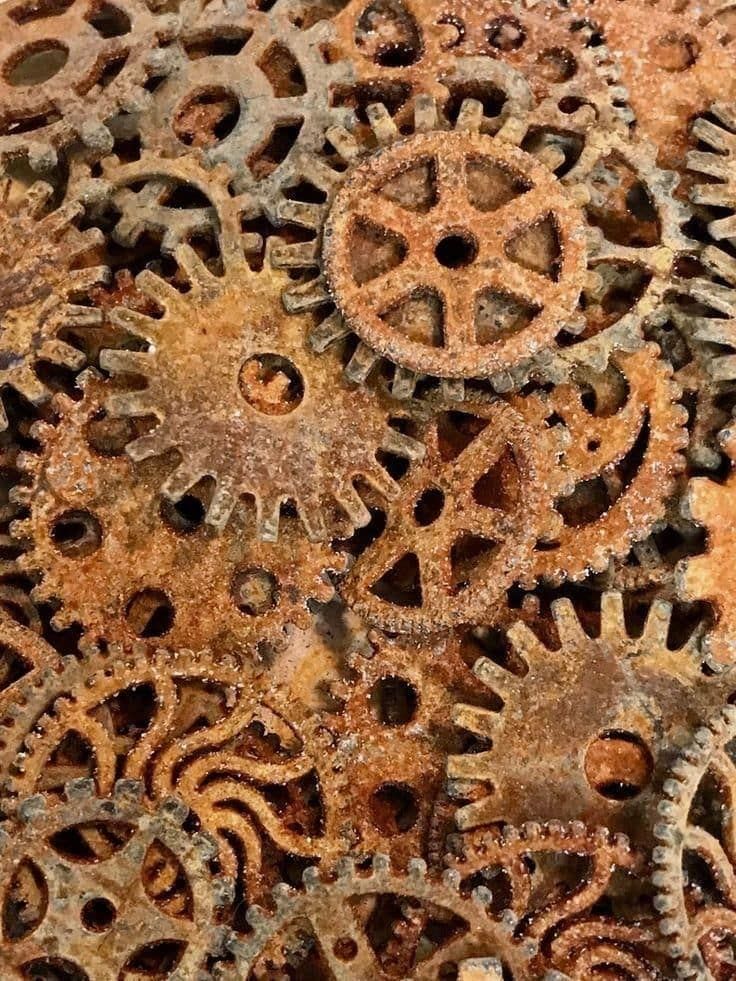Case Based Questions: The World of Metals and Non-metals | Science (Curiosity) Class 7 - New NCERT PDF Download
Q1: Read the source and answer the question that follows
Yashwant and Anandi are from a small village in Rajasthan. For their school project, they decide to learn about the traditional craft of ironsmithing, where blacksmiths make useful items from metals. They visit Sudarshan Uncle, a local ironsmith, who works with metals like iron, copper, and aluminum. Sudarshan Uncle explains how he shapes metal using heat and hammers, creating everyday tools like farming equipment, buckets, and pans. During their visit, Sudarshan Uncle shows them how he shapes an iron rod into a farming tool by heating it and hammering it into shape. Yashwant is amazed by how malleable the metal becomes when it is heated, while Anandi notices that the metal is hard and solid once it cools down. Sudarshan Uncle teaches them about malleability and ductility and how these properties make metals useful for different purposes. He also explains how metals are used in everyday life for tools, machinery, and even decorative items.
They ask Sudarshan Uncle why metals like gold and silver are used for making jewelry. Sudarshan Uncle says that gold and silver are both malleable and ductile, which makes them easy to shape into fine jewelry.

Q1. What property of metals allows them to be hammered into thin sheets to create products like pans and buckets?
A) Ductility
B) Malleability
C) Sonority
D) Electrical conductivity
Answer: B) Malleability
Q2. What is malleability and why is it important for creating tools and utensils?
Answer: Malleability is the property of a material that allows it to be hammered or pressed into thin sheets without breaking. It is important because it allows metals to be shaped into various useful products like tools, cooking pots, and utensils.
Q3. Why are gold and silver used for making jewelry despite being more expensive than other metals?
Answer: Gold and silver are highly malleable and ductile, making them easy to mold into intricate shapes and designs. Their aesthetic appeal and resistance to tarnishing also make them ideal for creating jewelry.
Q2: Read the source and answer the question that follows
Raj, Priya, and Arvind are in their science class learning about the ductility of metals. Raj brings up the fact that ductility is the property of metals that allows them to be drawn into thin wires. He explains that copper and aluminum are commonly used for electrical wiring because they are both highly ductile and excellent conductors of electricity. Arvind adds that gold is also highly ductile, which is why it’s used in electronic components for its superior conductivity.
The teacher demonstrates how copper wires can be stretched into very thin strands, which are then used in electrical devices like phones, computers, and home appliances. Priya wonders if any non-metals have similar properties, and the teacher explains that non-metals are generally brittle and cannot be stretched into wires like metals can.
Raj, Priya, and Arvind also discuss how the ductility of metals like copper and aluminum helps in making jewelry and musical instruments. Copper, for example, is drawn into thin wires and used in various ornaments, while brass, a copper alloy, is used for stringed musical instruments like guitars and violins.
 Q1. What is ductility, and why is it important in making electrical wires?
Q1. What is ductility, and why is it important in making electrical wires?
Answer: Ductility is the ability of a material to be stretched into thin wires. It is important in electrical wiring because it allows metals like copper and aluminum to be drawn into thin, flexible wires that can easily carry electrical current.
Q2. Why is copper preferred over other metals for electrical wiring?
Answer: Copper is preferred for electrical wiring because it is highly ductile, allowing it to be made into long, thin wires, and it is also a great conductor of electricity, ensuring efficient energy transfer.
Q3. Why is gold used in electronic components like circuit boards despite being more expensive than copper?
Answer: Gold is used in electronic components because it is highly ductile and does not corrode, making it ideal for use in small, high-quality electrical connections in devices like phones and computers.
Q3: Read the source and answer the question that follows
Tanvi, Raghav, and Simran are in their science lab, observing a piece of iron exposed to air and moisture. Over time, they notice a brownish, flaky substance forming on the surface. Tanvi explains that this is rust, which forms when iron reacts with oxygen and water. This chemical reaction creates iron oxide, which weakens the iron, making it brittle and less durable.
Raghav notices that rusted iron becomes flaky and crumbles, pointing out how rusting weakens tools, vehicles, and structures. Simran asks how rusting can be prevented, and Tanvi explains that iron can be protected by galvanization, where it is coated with zinc. This prevents air and moisture from reaching the iron, stopping rust formation. Tanvi also mentions that painting iron or applying oil or grease can also help protect it from rust.

Q1. What is the main cause of rusting in iron?
A) Contact with heat
B) Exposure to air and water
C) Contact with plastic
D) Exposure to sunlight
Answer: B) Exposure to air and water
Q2. What is rusting, and what causes it to happen?
Answer: Rusting is the process where iron reacts with oxygen and moisture in the air, forming a reddish-brown compound called rust, which weakens the iron.
Q3. Explain how galvanization helps prevent rusting in iron.
Answer: Galvanization involves coating iron with a layer of zinc to prevent exposure to air and moisture, which stops rust from forming and protects the iron from corrosion.
|
80 videos|224 docs|12 tests
|
FAQs on Case Based Questions: The World of Metals and Non-metals - Science (Curiosity) Class 7 - New NCERT
| 1. What are the main differences between metals and non-metals? |  |
| 2. Can you give some examples of metals and non-metals? |  |
| 3. How do metals react with non-metals? |  |
| 4. What are some common uses of metals and non-metals in daily life? |  |
| 5. How do the physical properties of metals and non-metals affect their applications? |  |





















